Photo-Textile Artist Alison King combines delicate and seamless collage and free-machine embroidery with photographs printed on canvas. The finished artwork really builds on the photographic imagery, enhancing it to a higher level of realism through the use of texture and pattern.
Alison King received her Bachelor of Design degree at the Ontario College of Art and Design in 2004, majoring in Material Art & Design. During her studies, she began to photograph everyday things with a new sense of detail, drawn by the textures and colours she encountered. And it was here that she first started to combine pieces of her photographs into her textile works.
Alison’s continued passion for texture attracts her to decomposing buildings with peeling paint and worn woodwork, as well as the rough bark, layered leaves and velvety moss she finds in the local forest landscapes. These subjects inspired her to develop a process for recreating her subjects, where she uses photographs printed on textiles and embellishes using collage, appliqué and machine stitch. Her work has been exhibited throughout Canada and can be found in private collections worldwide.
In this interview we discover how Alison first started integrating photography with textile art for a photo-real effect with added texture, and how she continues to refine this process to achieve a seamless, smooth look to her work. She shares her inspirations for her work and her goal of creating large-scale pieces in the future.
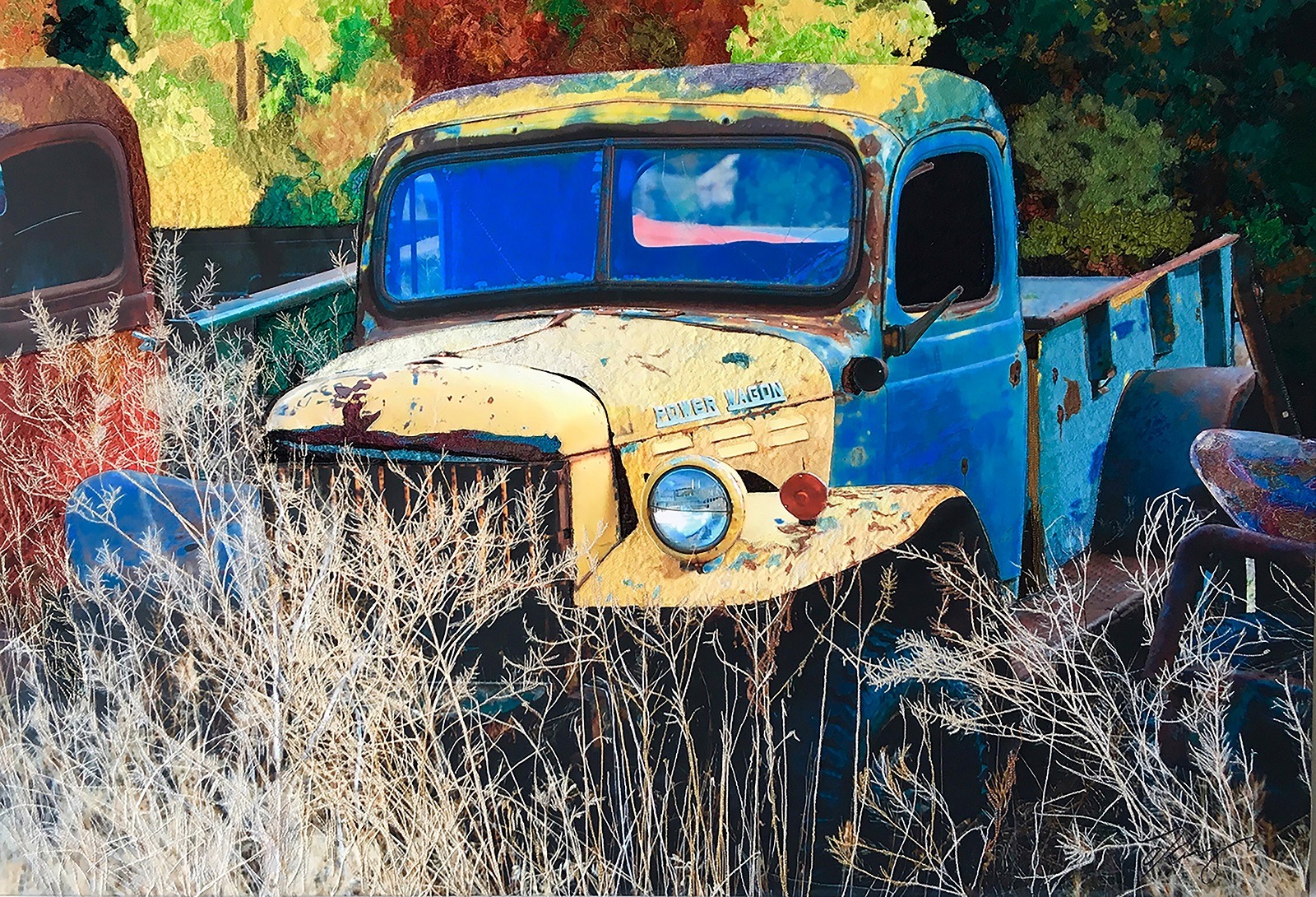
Discovering textile art
TextileArtist.org: What initially attracted you to textiles as a medium? How was your imagination captured?
Alison King: I think my true attraction to textiles began when I was introduced to them in college.
I fell in love with how they felt, their movement and the variety of textures and colours. I became excited by the endless ways textiles could be manipulated to create different effects.
In my years in the textile programme at the Ontario College of Art and Design in Toronto, I explored a lot. My imagination was captured during that exploration. What happens when you dye, burn, stitch, rip and join fabrics, or when you cover them with wax, resin or paint? Textiles allowed me the freedom to experiment that I desired as an artist. Once I found textile art, I never looked back!
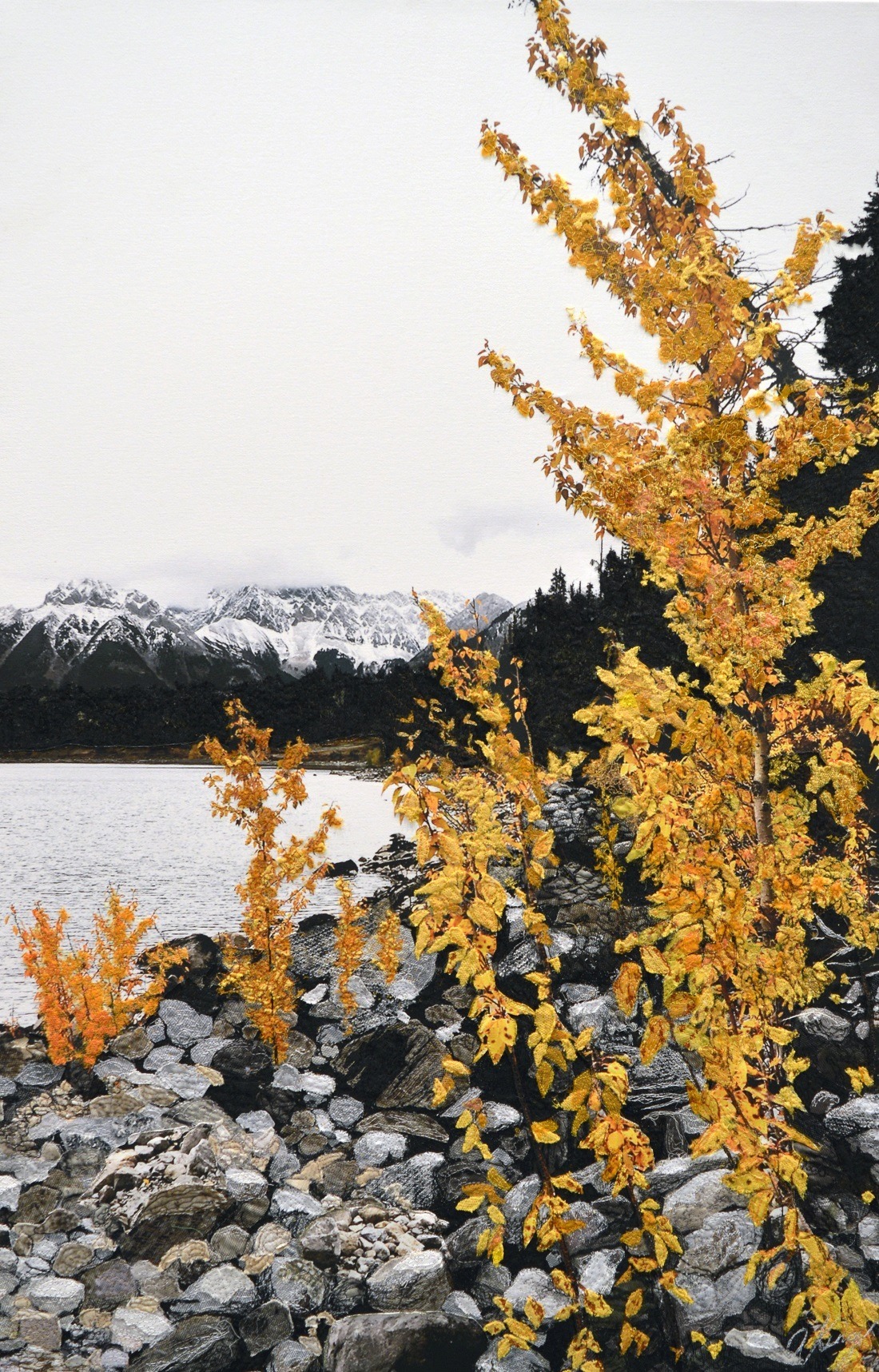
What or who were your early influences and how has your life/upbringing influenced your work?
I would say that art was within me from the beginning. As a child, I was always creative and imaginative. I made up stories. I took photos with an instant polaroid camera that I was given as a gift. I recall that so vividly. I loved that thing!
I’m very fortunate that my artistic passion was always encouraged. At the age of ten, my parents enrolled me in watercolour painting classes at a community centre. I clearly remember being the only child among what seemed to me to be a group of ‘Grandmas’. It was the best!
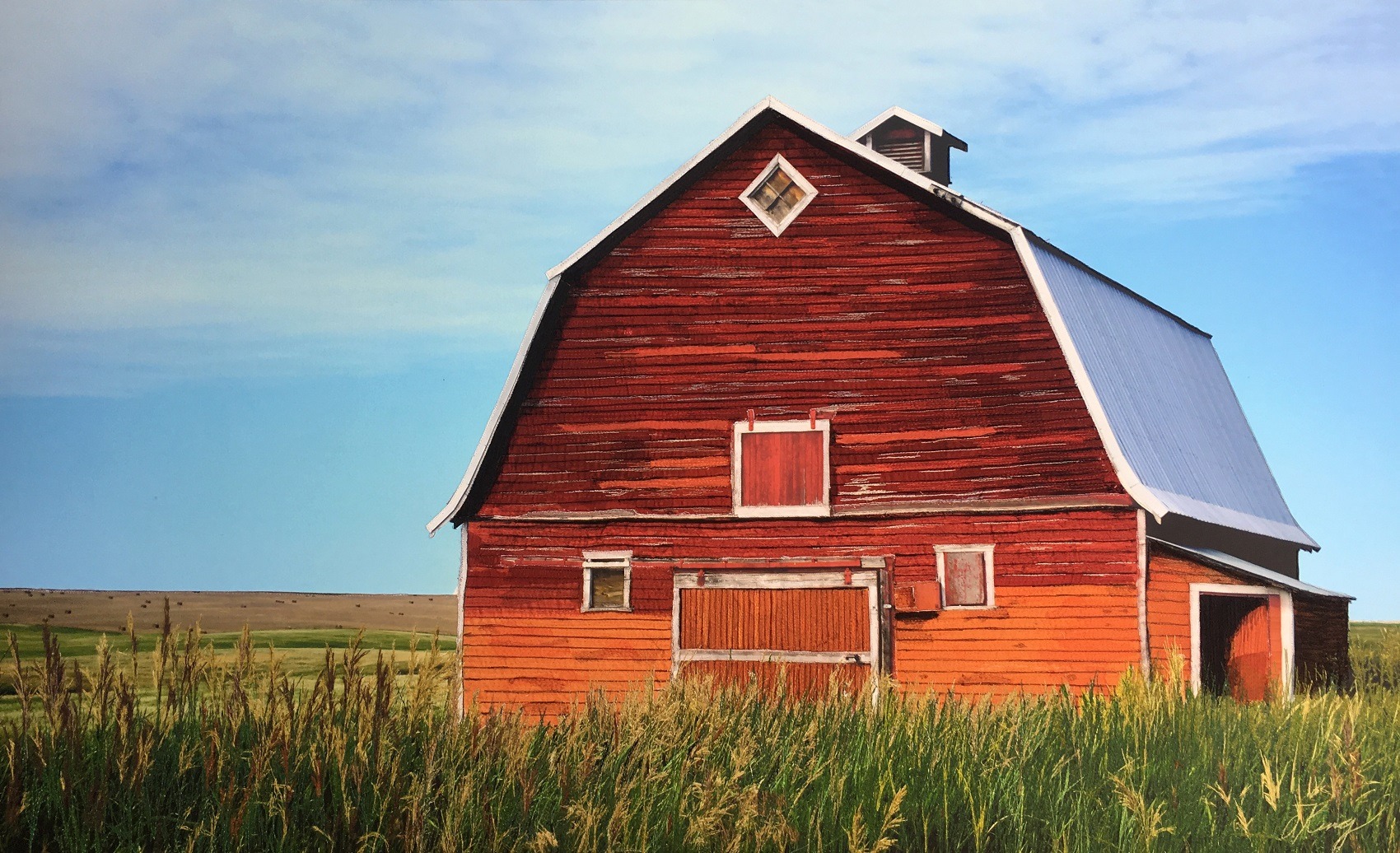
What was your route to becoming an artist?
After dabbling in art workshops at a young age, my art blossomed into a passion through my years at school.
In college, I was able to fully immerse myself in the arts. I found those years to have such an impact on my artistic development.
In 2003, I did an internship with a textile artist called Chad Alan, in Washington, DC. He became pivotal in my journey, though I didn’t know it at the time. He opened my eyes to using textiles in fine art. Up until that point I had envisioned myself creating textiles for interiors.
After that internship, I came back with a fresh outlook and prepared for my graduation exhibition. I created my first major body of work and sold my first piece at that show. It was then I thought ’I guess I’m an artist now’.
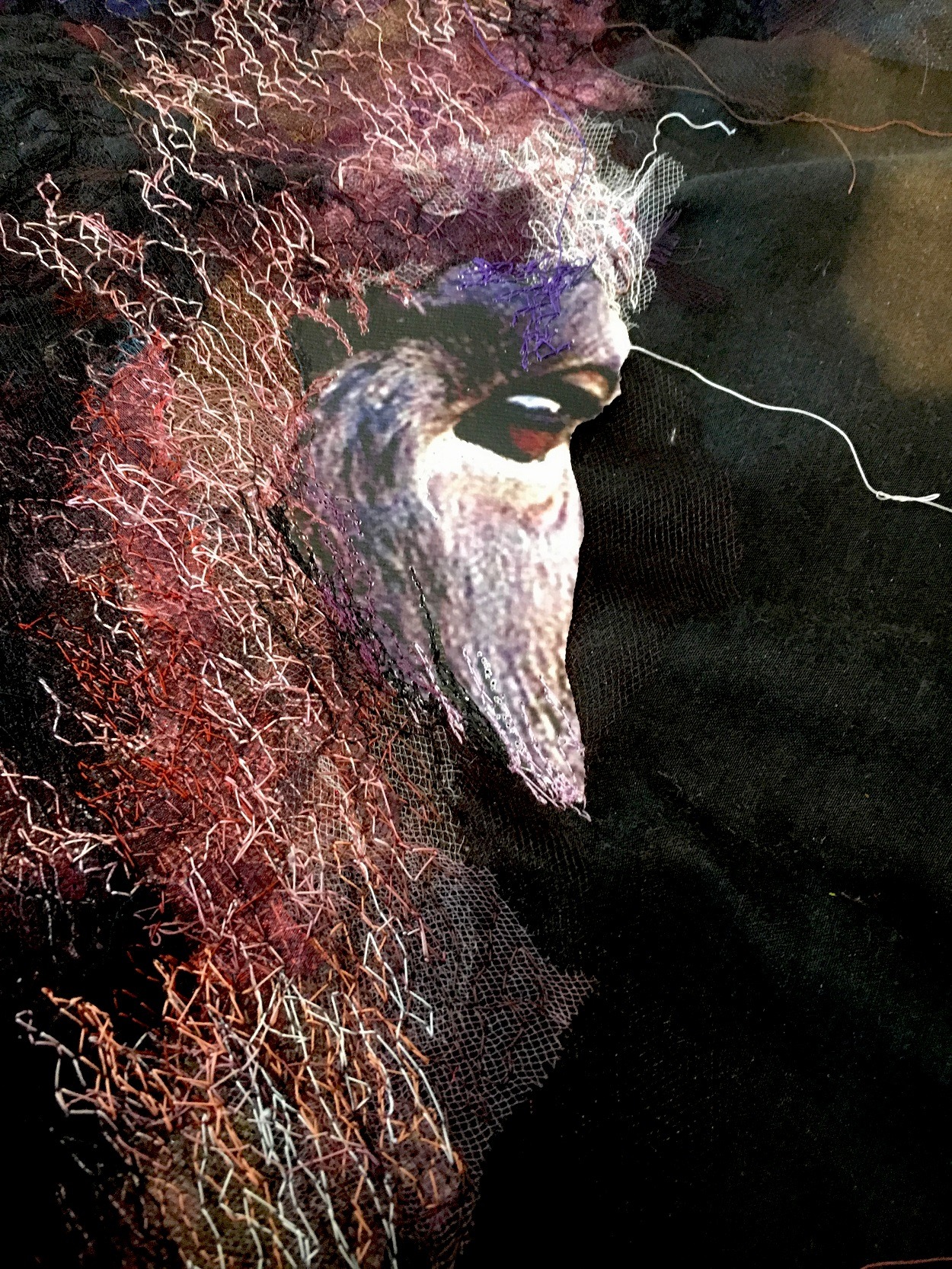
When photography combines with textiles
Tell us about your process from conception to creation
After my graduation show in 2004, I continued to exhibit my work. Today I am often asked where I learned to combine photographic imagery and textiles. The fact is that I was never taught this combination.
The idea came to me in the middle of the night following a college project where we were asked to do one thing each day that could be applied to my year-end exhibit. There were no boundaries, other than it had to happen daily. I decided to take a photograph of something I came across every day on my morning walk to college. I photographed everything and anything; details of rust, wood, flowers, leaves, tree bark, bricks, tyres, litter. Through this daily process, I began to notice how beautiful the textures were in my subjects. How the most ordinary things were so alive with the patterns and colours that surfaced through their deterioration. It was enlightening for me, finding beauty in the unexpected.
It was at this point when I started to reference my photographic images and recreate them in textiles. I did this for a short while but became bored. I felt my work was becoming an ‘artistic quilt’ but I wanted to create something new and different. And that’s when it came, my ‘in the night’ moment. I thought, rather than just referencing my photographs, why not directly include them? Why couldn’t I take what I love about photography, the realism, the preciseness and the act of capturing moments, and combine it with what I love about textiles, the texture, warmth and depth.
So I decided I would try it at art school the next day. And now, fifteen years later, I am still in love with the combination of textiles and photography. They give something to each other. The textiles bring a depth to the imagery and the imagery brings realism to the textiles. When people ask me what I call my style of art, I call it Photo-Textile Art!
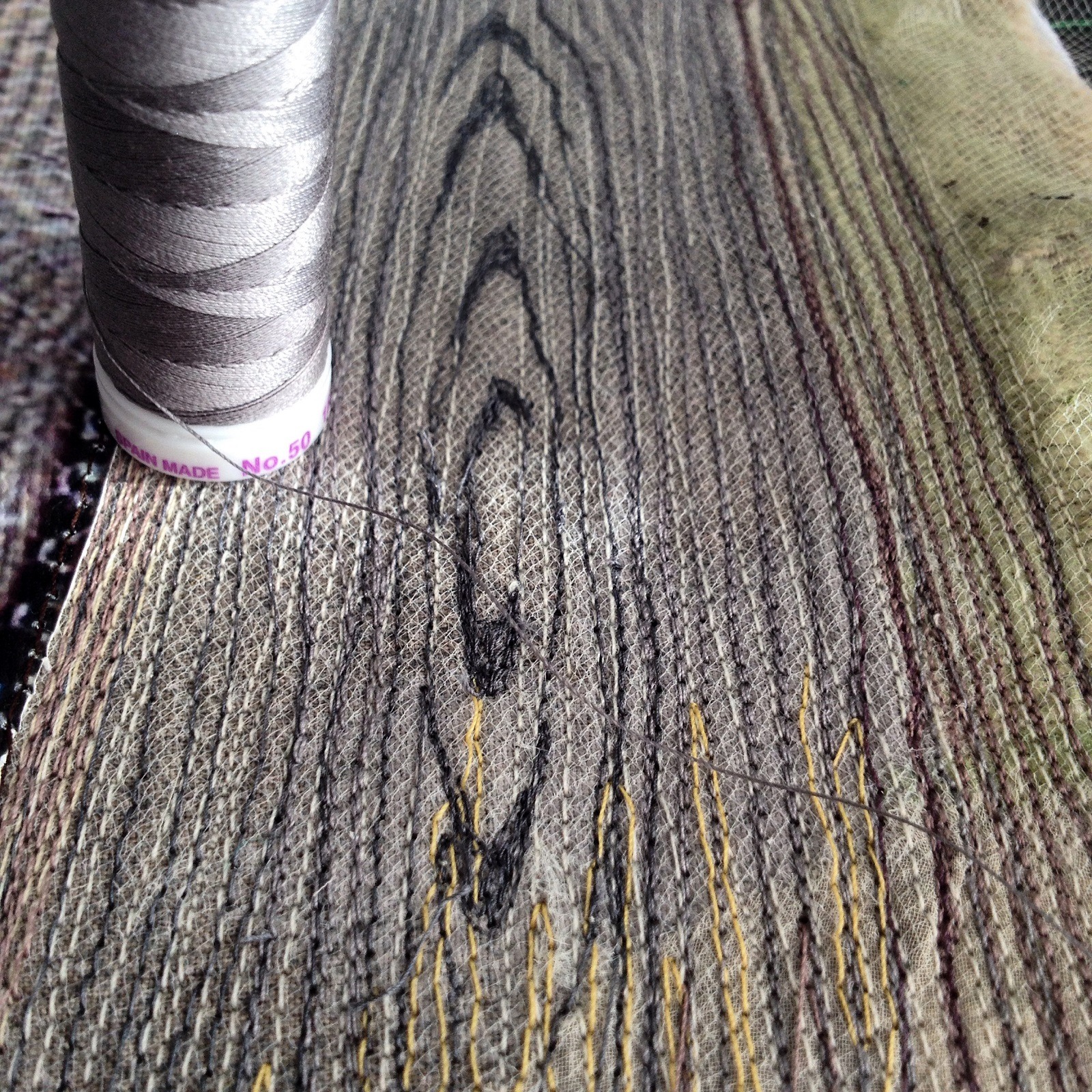
Tell us a bit about your chosen techniques and how you use them
To combine photographic imagery and textiles I start with an image printed on to a specific type of canvas material. Once I have my image in its printed form, I begin to deconstruct it.
I pick and choose the areas I want to keep with the realism of the photograph and the areas I want to remove and recreate in textiles. That recreation is done by layering small pieces of fabrics and stitching them using free-motion embroidery techniques. I use the thread to mimic the lines and patterns from the original subjects. I combine the textile sections with the photographic imagery on canvas. Sometimes I embellish over the imagery. Or I might appliqué the imagery back on to the textiles.
There is a lot of construction in each piece. I want to ensure that from a distance the combination of the photography and the textile work is quite seamless. Years of mistakes and happy accidents have helped me develop my style. Even today I am still learning and experimenting.
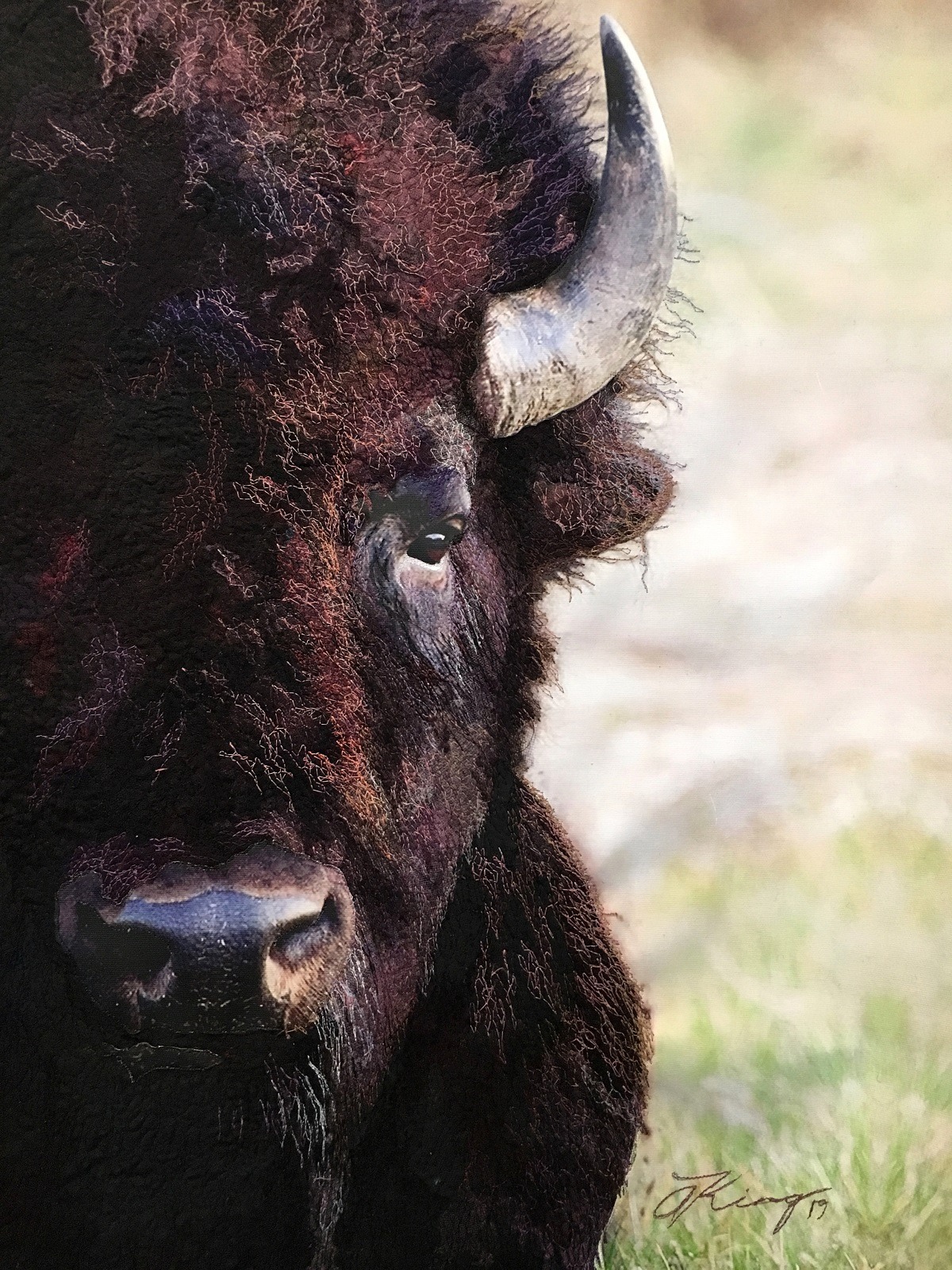
What currently inspires you?
Most often I am drawn to old buildings, forests, weathered barns, old trucks. Things that have character, a life and a story.
More recently I have begun to work with wildlife which is a new and exciting avenue for me.
As society becomes more environmentally aware, I am inspired to create works that repurpose fabrics. Textile waste is a worldwide issue. So much of our textile waste is reusable and can be recycled. I use old clothing and textile scraps whenever possible.
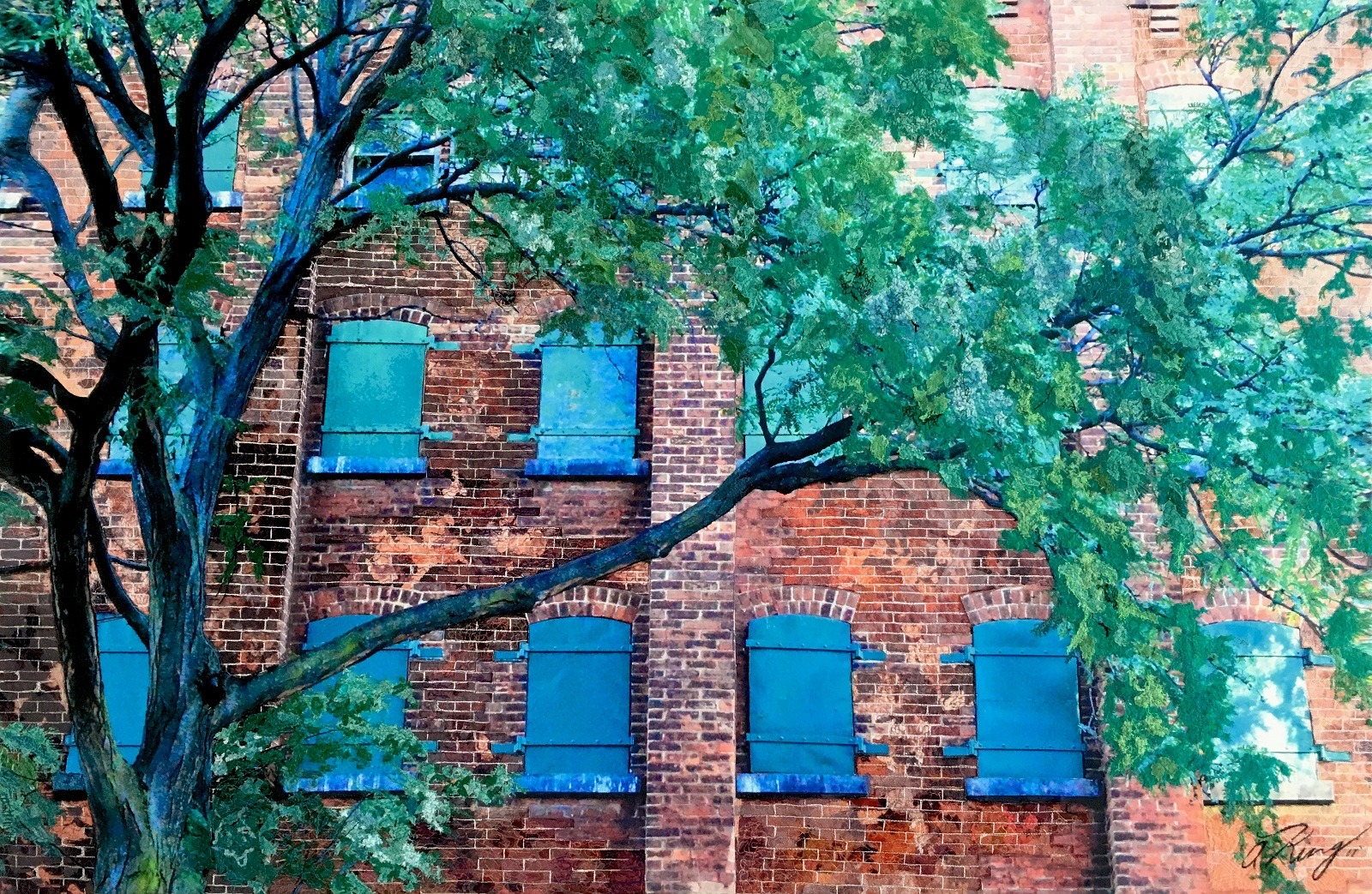
Art that marks moments in time
Tell us about a piece of your work that holds particularly fond memories and why?
That’s a tough question! Each of my works is inspired by a place I have been or a subject I have photographed. They each hold a moment of my life.
I think many of my earlier urban buildings hold special meaning to me because I grew up in Toronto and that’s where my style of work was born. Now I find solace in the forests and so my pieces depicting those trees bring me joy. It’s just too hard to pick a favourite one!
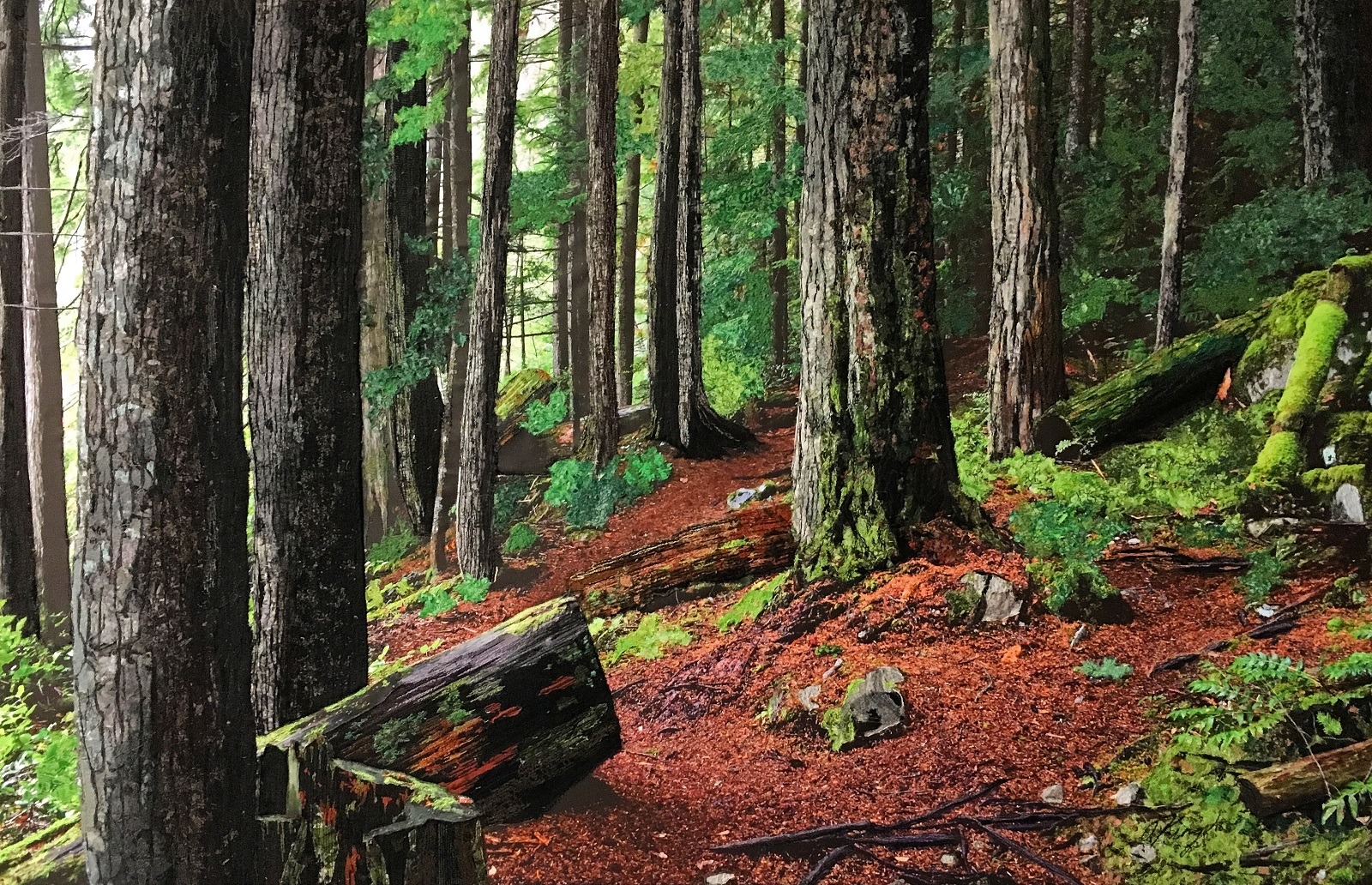
How has your work developed since you began and how do you see it evolving in the future?
It’s evolved quite a lot. My skill has certainly developed over the years as I have figured out what works for me and what doesn’t.
When I started combining photography and textiles, I began by using black and white imagery on paper. It was collage-like. Now it has moved into a smoother, seamless integration.
My goal is to buy myself a long arm sewing machine, so I can start to create large-scale works. I want to create a forest so large that you feel you are there, standing among the ancient trees, breathing in the forest air.
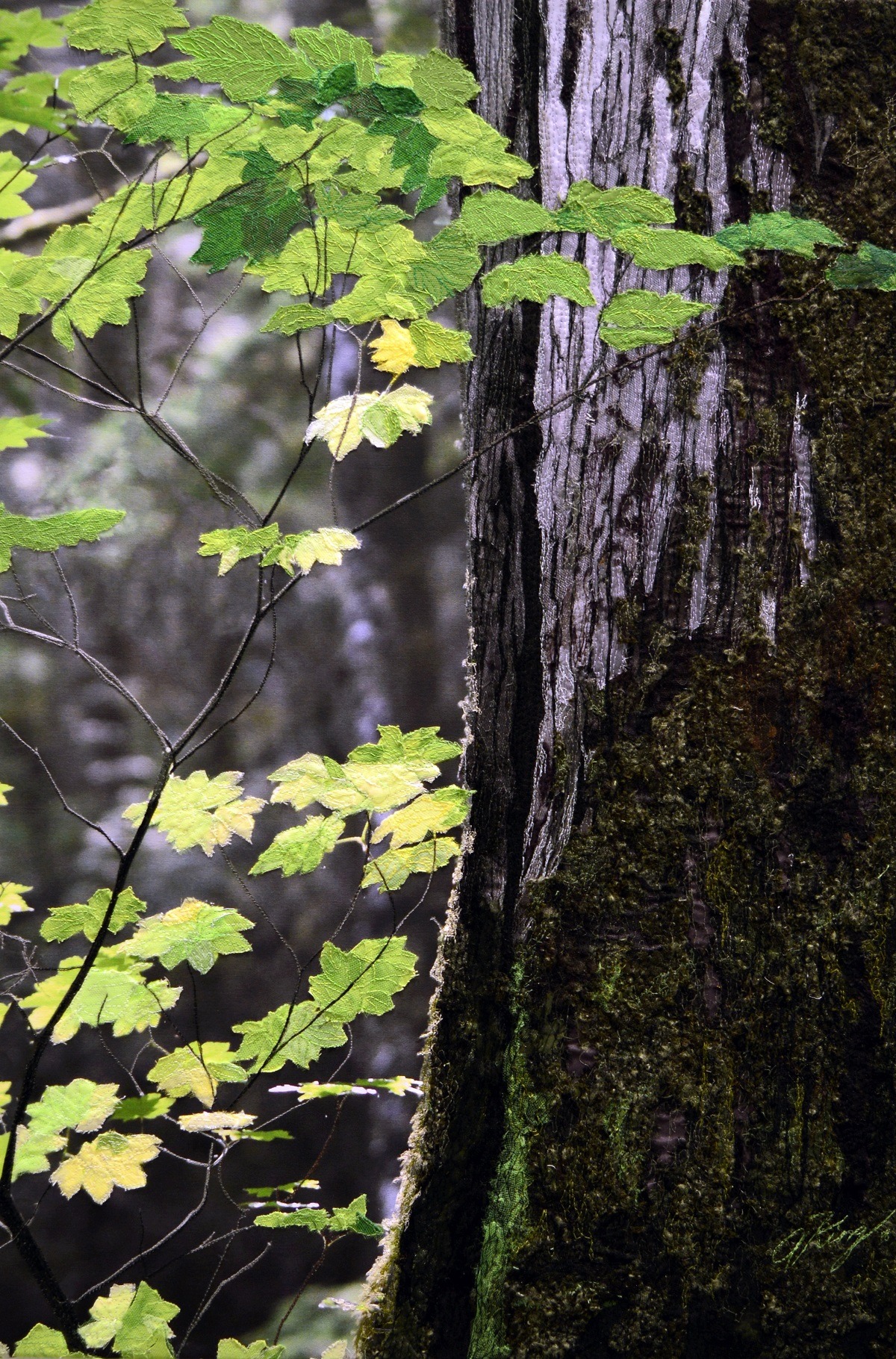
What advice would you give to an aspiring textile artist?
Find your own niche. I don’t think there is anything more important when working as an artist.
Be inspired by others. Soak in all the creativity out there. But in the end, make your own mark and believe you that you can.
For more information visit www.alisonking.ca
Did this interview inspire you to try photo-realism in your own work? Let us know by leaving a comment below
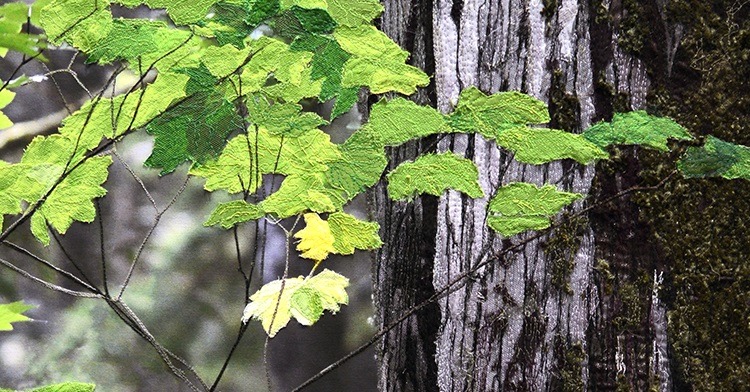
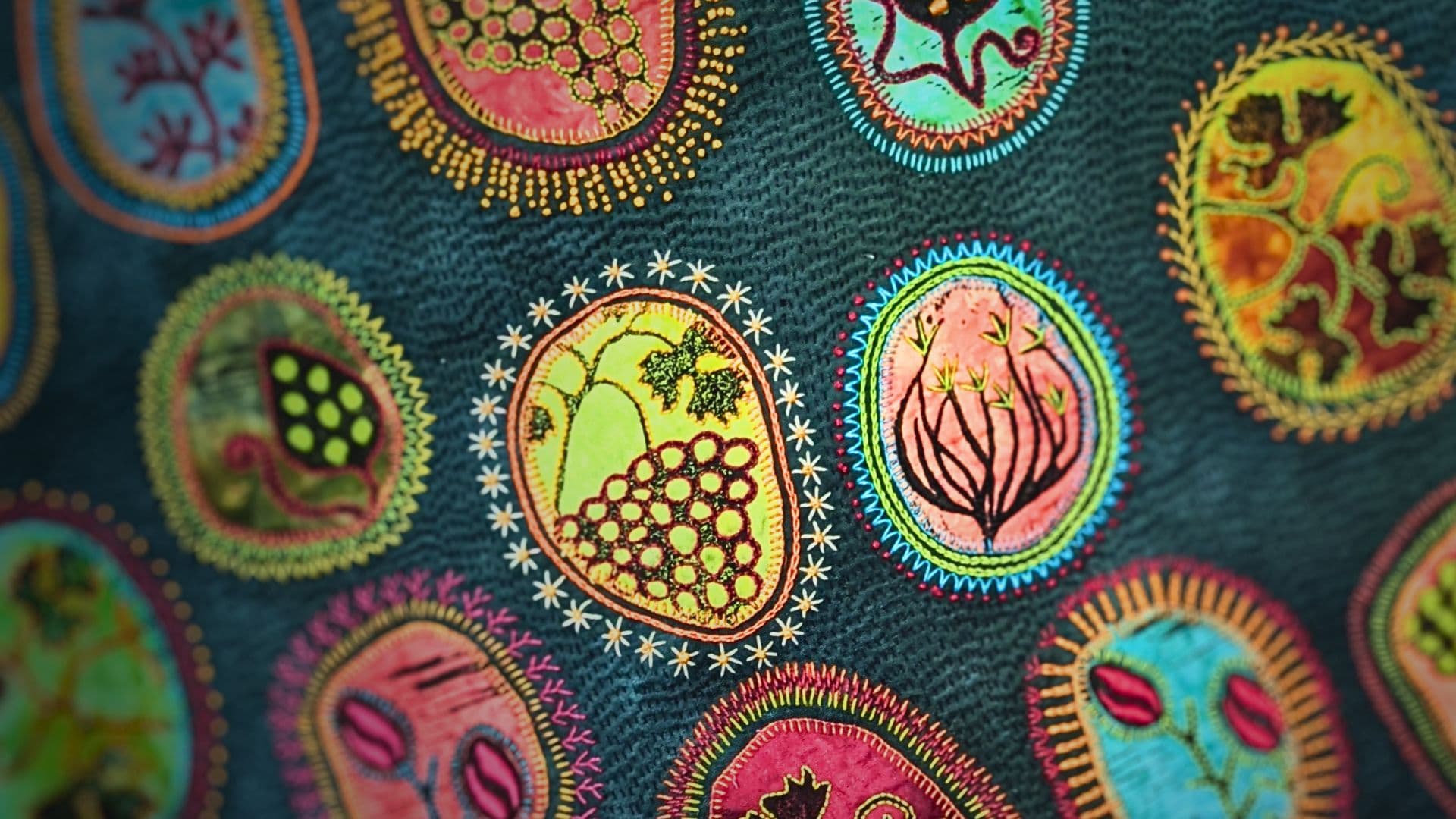
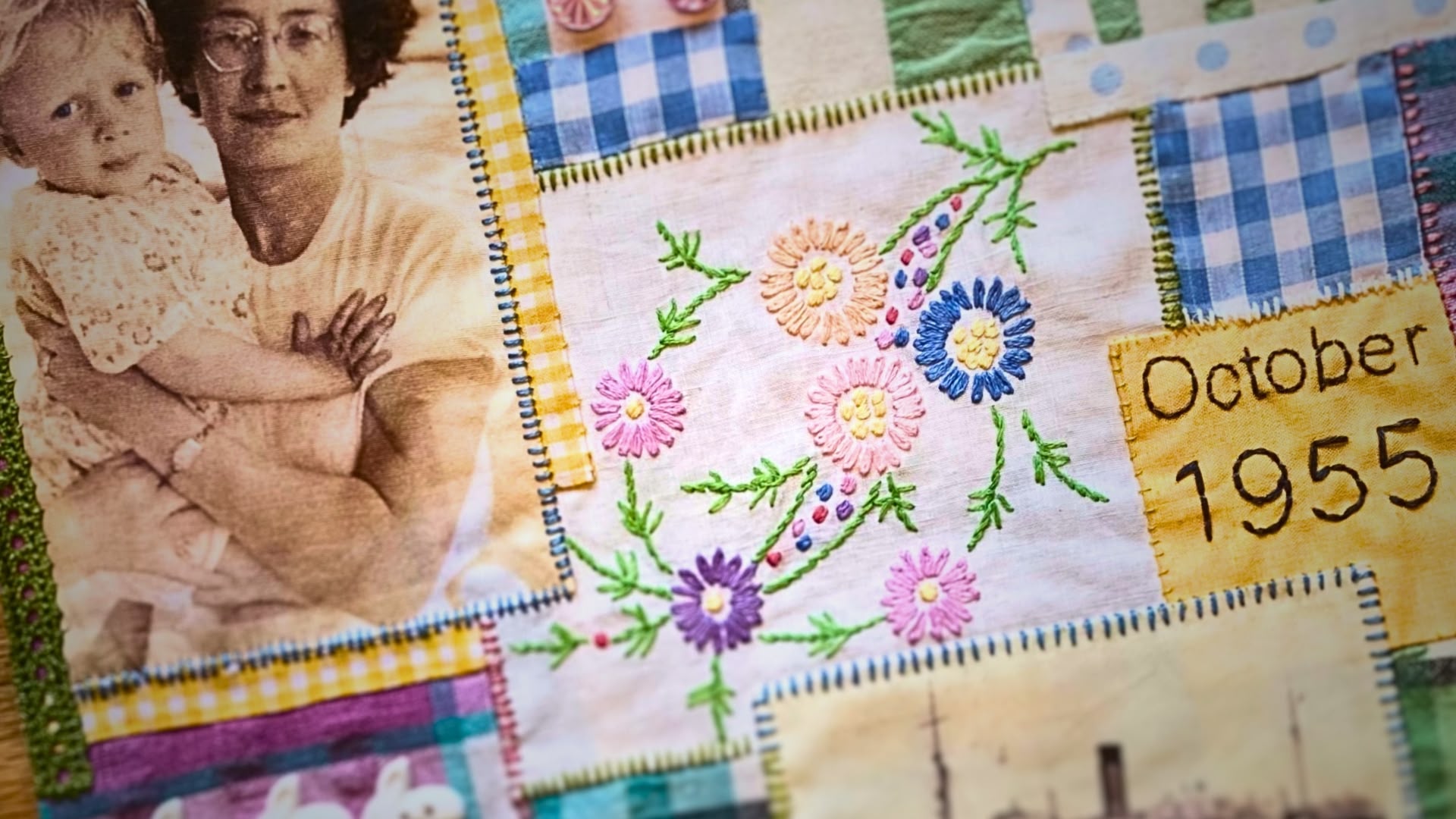
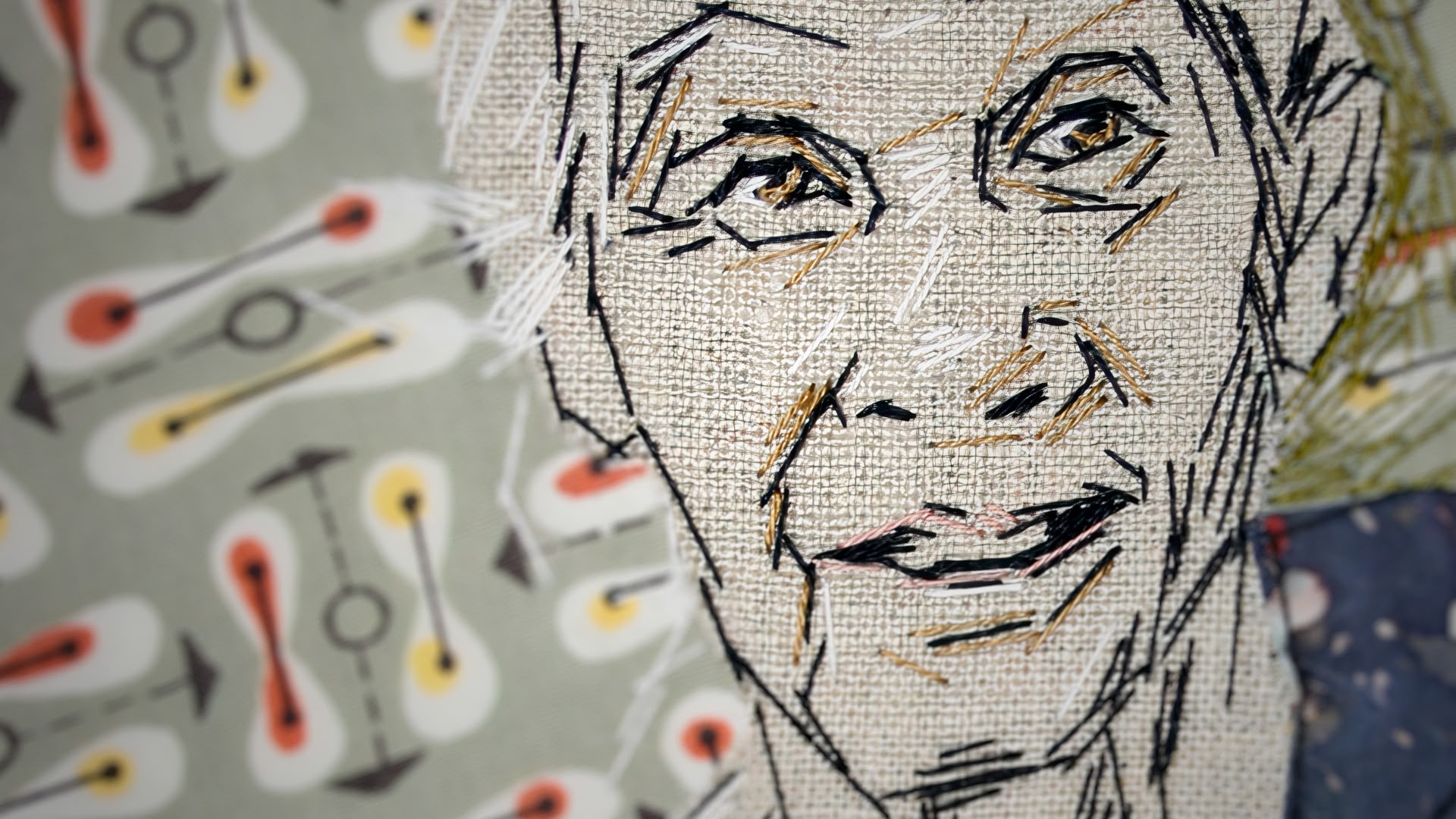
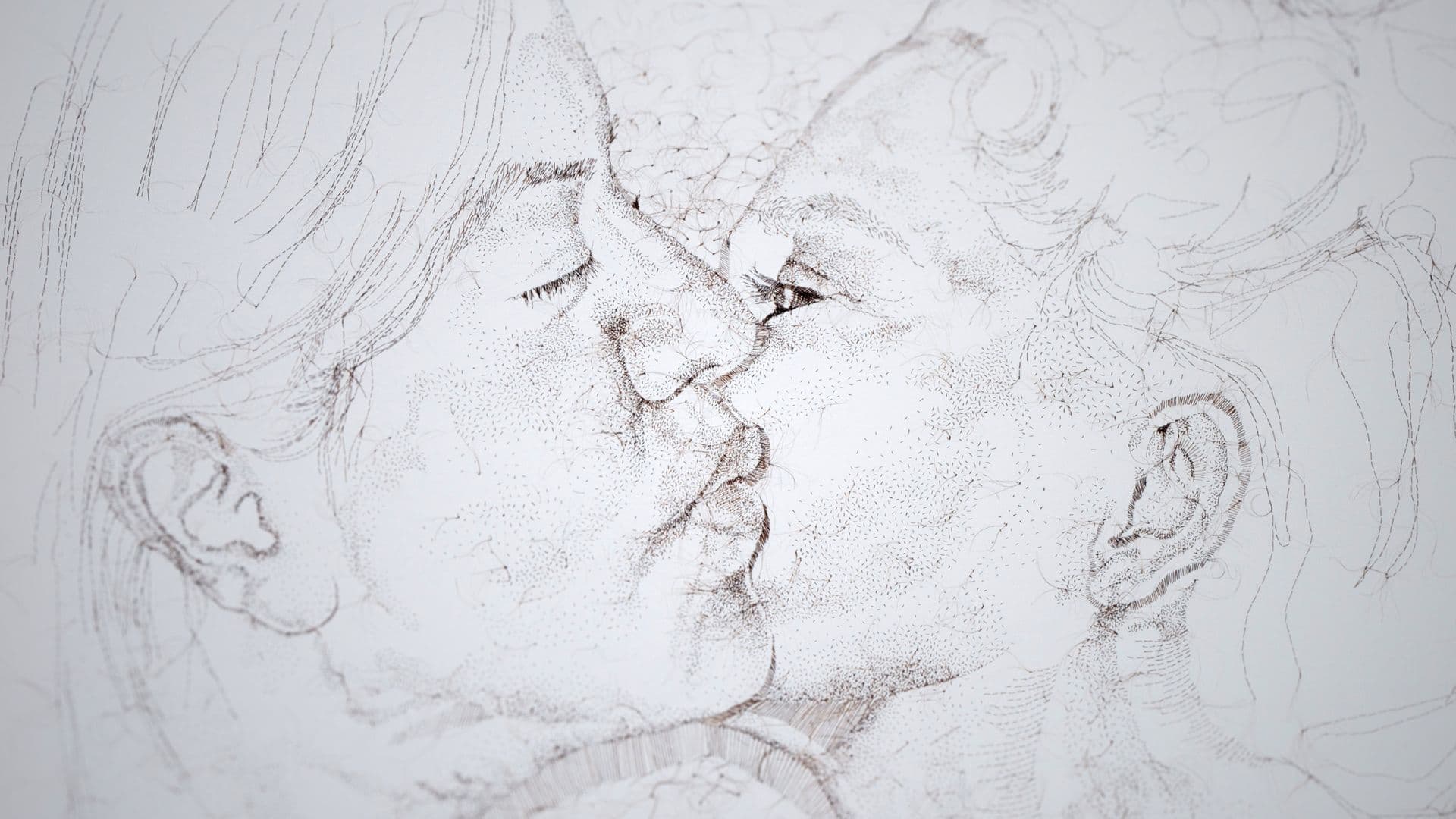
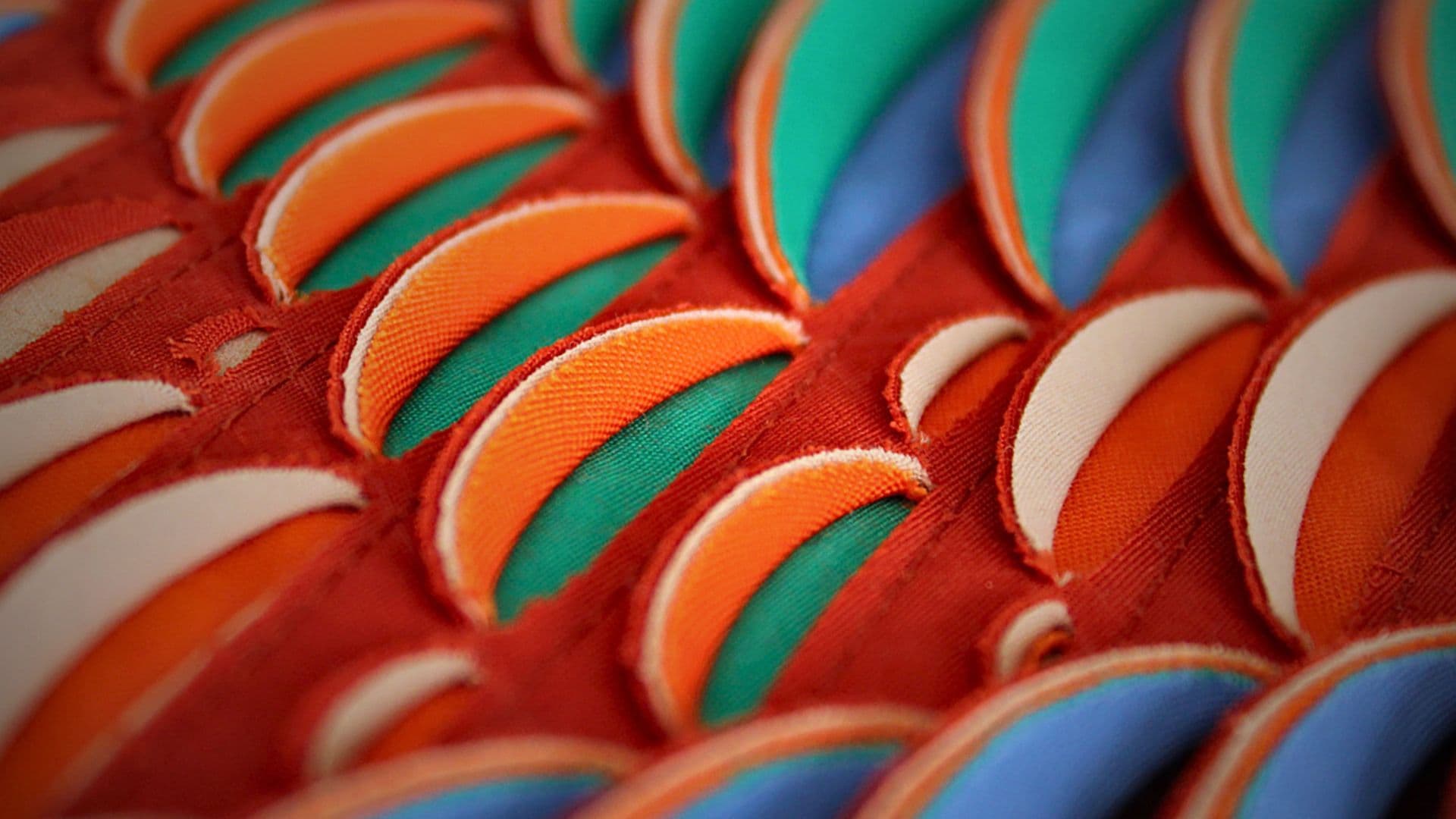

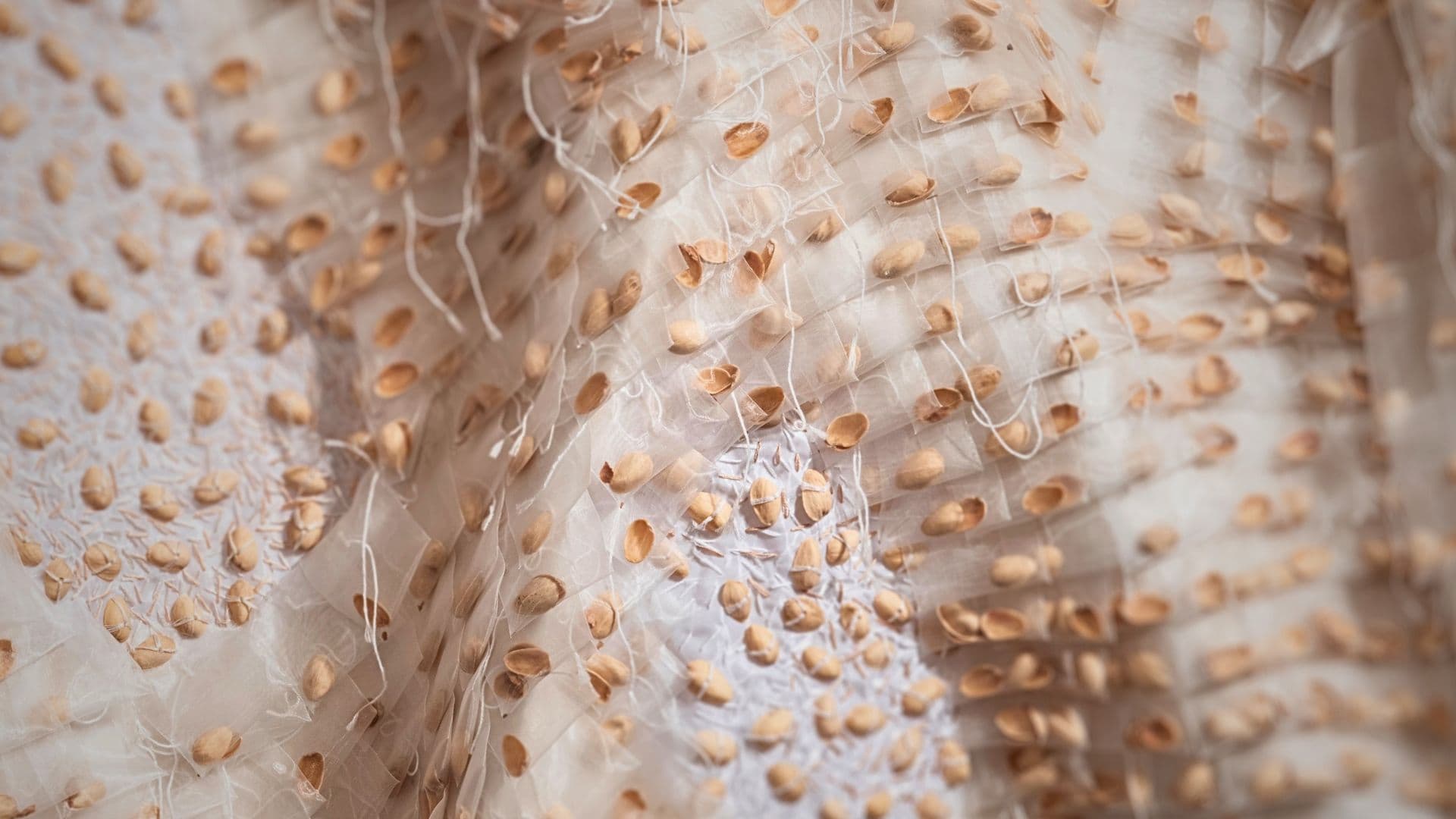
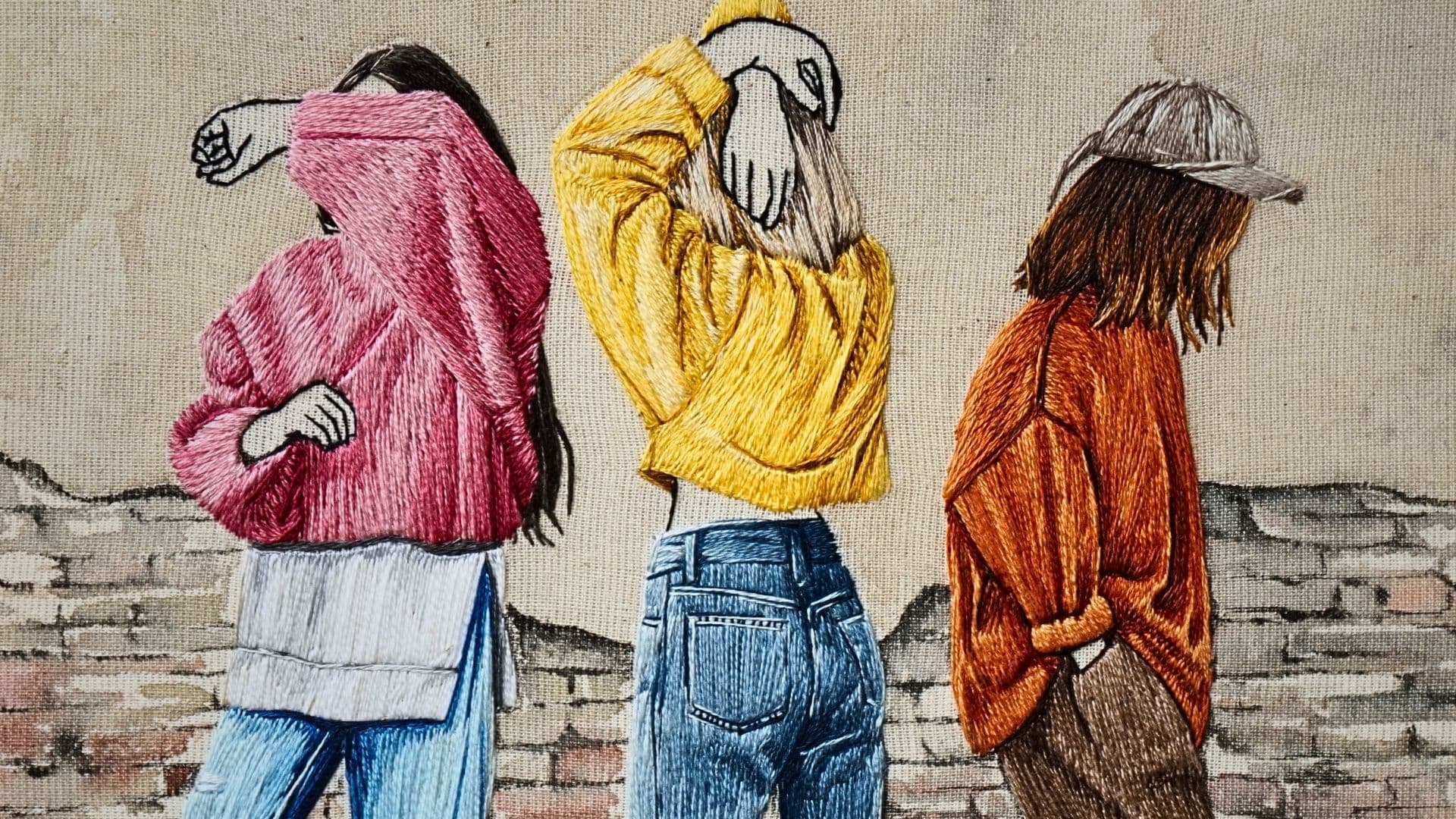
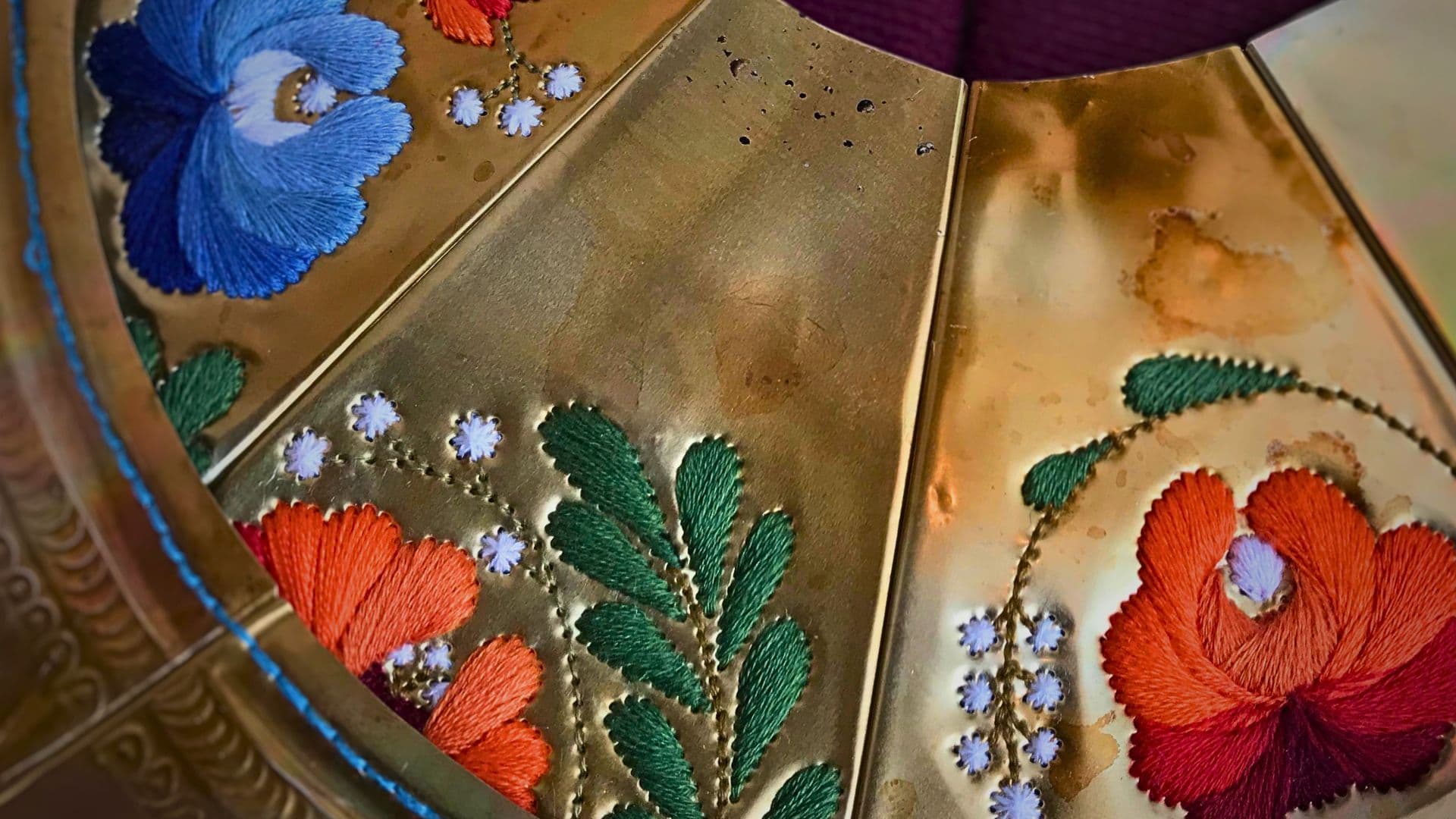
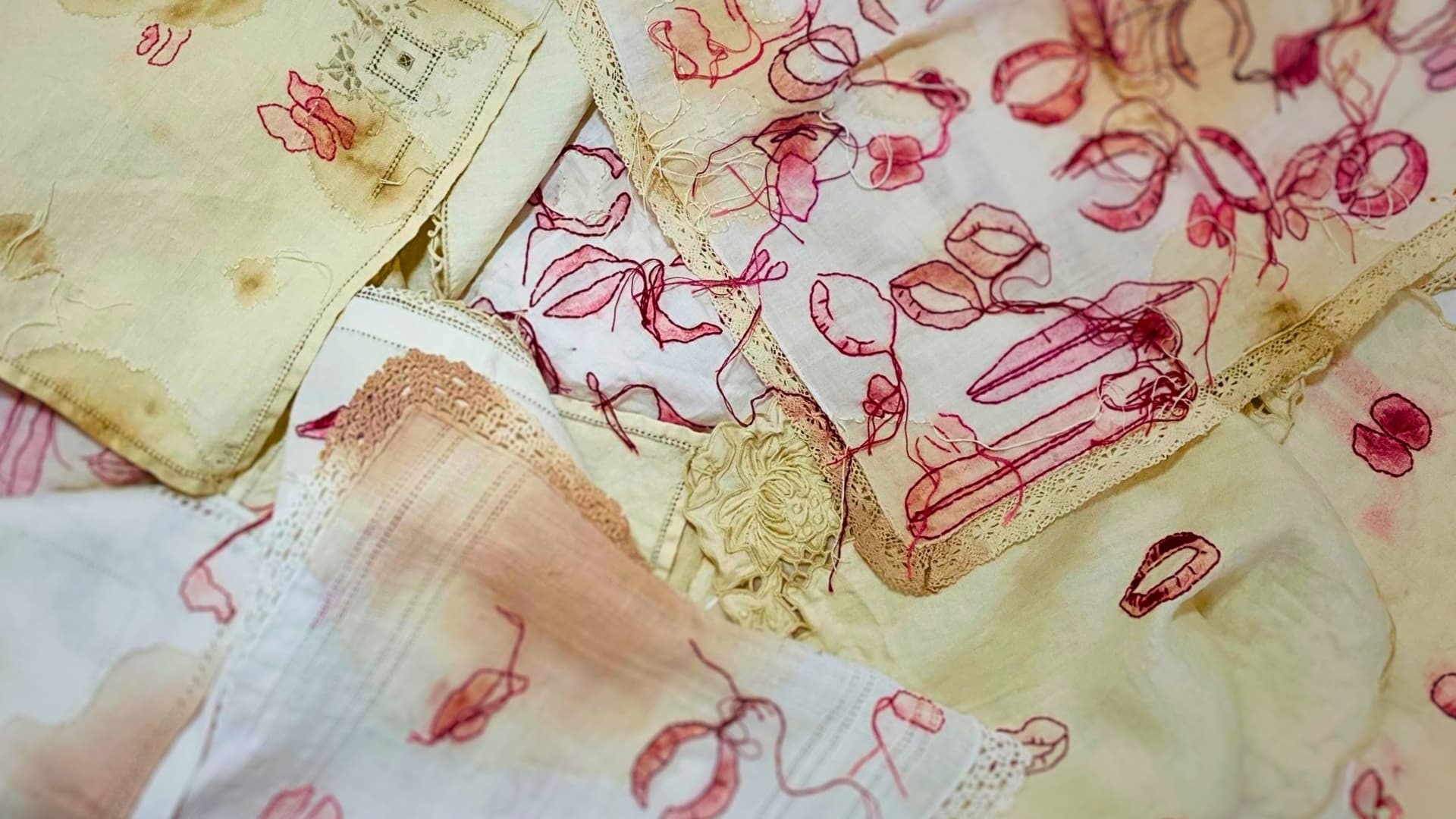
22 comments
Barb
I have a similar history of being an Illustrator and also teach at a college, but have sewn pretty well from age 12 on… I now love to blur the boundaries of my art directions! Great work! I’ve dabbled bit and want to do more. https://www.madebybarb.com/2022/07/27/how-to-design-a-simple-art-quilt/
Ellen Cunningham D.A.
I love her landscape work.I started printing photographic images by using t-shirt print sheets onto which my own photos were loaded. I did a panel using mixed media and photographic input with hand embroidery based on images snapped at the top of the Sagrada Familia in Barcelona. I had discovered the t-shirt printing technique when I transferre d photos for a 100 year old church celebration of parishioners to surround a large hand printed image of the present church building with the ghost of its predecessor printed on top . These prints were 1. painted with gloss paint on a muslin screen and 2..stencilled.No high-tech was used. I’ve always enjoyed experimenting. At present I’m working on satin painted with inktense pastels and embellished with hand embroidery. Inktense pastels are a very good medium used as paints and you just set the dyes by ironing on the back-easy if you do not have a studio.
Ann Pocklington
I have been using my digital photographs for over a decade. Sometimes they are printed directly on fabric with my desk top printer, sometimes transferrd to Transfer Artists Paper – TAP – which then has additional images added, forcexample drawimhs or written text, and then ironed onto fabric. Most successful has been using collaged and stitched fabric, adding an image with TAP then more stitching and embellishment. Throw in some Photoshopping and the possibilites are endless. Printing onto canvas is the current experiment, and backing it with plain fabric as it goes through the printer (which keeps ink off the roller and produces a ‘negative’ image through the canvas holes.
Barbara Lees
Wonderful and inspiring. Which materiale do you transfer to, and can you tell us more about the process?
John Smith
Really amazing work. It’s hard to identify that the image is photo or art.
Salute to Alison King for his art work.
Hilda
Unbelievable what you create. Just stunning work.
Barb M.
I too am enthralled by these images and have wanted to work with embroidered photo images on fabric/canvas in sizes larger than typical home ink jet printers. Any advice on the photo transfer process used in these pieces would be really appreciated. Many thanks.
Gregory T. Wilkins
I have been painting and doing stitch and bead work directly on my photographs 24″ x 24″. This is very challenging because paper is prone to tear and wrinkle. You stated you use a specific type of cloth canvas to transfer your photograph to before stitching. Please share the name and how this is done. Thanks!
Virginia
Beautiful work!
Mariani
Yes, it did inspire me.Will be working on a piece soon.
Jan Clark
I am right up there with the age thing, 74 and just beginning. I have done textile work and thread painting but THIS!!!! I can hardly wat to do another.
Gillian
Wow, I am thrilled to see your work. I am currently working on a piece where I am painting with acrylics on canvas and then plan to applique to add texture to the painting, but why not incorporate the painting which inspired the piece.
Will definitely give this a go.
Absolutely inspirational. thank you.
Vivian Kapusta
I’ve been working with my photography and dense stitching for some time. I now use my Innova long arm on a lightweight canvas … be sure to check them out. The machine is fabulous.
Carla Paterson
At 65, I might be a “youngster,” but I, too, echo these sentiments, and love Alison King’s work!!
Could anyone help answer two questions?
1. Is it still possible to take Sue Stone’s online class? If so, how do I access it?
2. How can I transfer a photographic image onto cloth? I have a wonderful image of my son’s dog, taken in the car, and backlit. I’d love to create something with it.
Kind regards, Carla
charlotte
Hello Carla, Thanks for your comments. I’m sure the community will be able to help you with your photographic image questions, please do email us on community@textileartist.org and we will be able to help you with your enquiry regarding the course with Sue Stone. All the best, Charlotte
Ana Windham
I echo Rosemary Otter and am right behind her in age. As a 70 year old, I became interested in fiber art after taking Sue Stone’s online class and all the featured works featured in textileartist.org. My favorite subjects are similar to yours, with landscapes being my most favorites. Your work inspires me and can’t wait to see your large-scale work!
Sarojani
Wonderful pieces.Wanted to try this out for a while now after reading of another artist working with photography and stitch.Im inspired and will be trying out a little piece soon.Thankyou
Richa
Your subjects and interests and story seem to sound so familiar. I enjoy similar things too. You integrated the textile and photo beautifully and love how the colors pop out giving a 3D effect.
Will try it out. Do you only stitch or use fabric on the print too.
Inspiring work and can’t wait to see your large-scale work! Thank you!
All the Best
Richa
Your subjects and interests and story seem to sound so familiar. I enjoy similar things too. You integrated the textile and photo beautifully and love how the colors pop out giving a 3D effect.
Will try it out. Do you only stitch or use fabric on the print too.
Your work inspires me and can’t wait to see your large-scale work! Thank you!
All the Best
Rosemary Otter
It most certainly did, and I’m going to try some thing similar out. Think I might be your oldest fan at 80yrs. Will let you know how it goes…….
Marjorie Schultz
Well, I am inspired to try this too – but I have less years than you, Rosemary , to perfect this technique, being 86 this year! But try I will….
Ann Cofone
I beat you by one year, Rosemary …as I’m 81 and am fascinated with the results of photography combined with thread..I’ve been thinking about it for awhile..Let’s see what we can do.
Ann Cofone
fiber_girl @yahoo.com